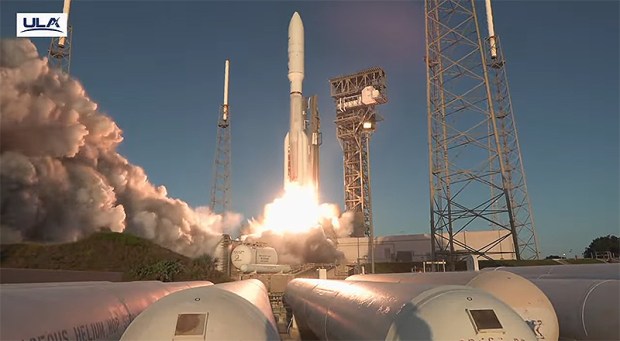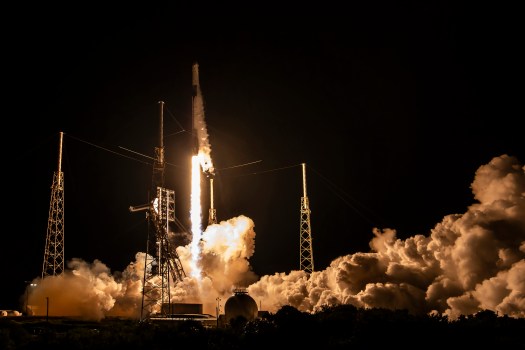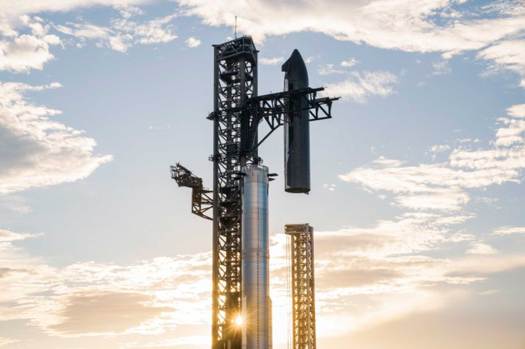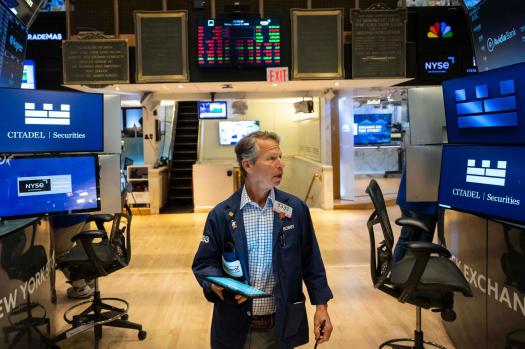After a week of resets, United Launch Alliance successfully launched its second mission of the year, which was another attempt by Amazon to compete with SpaceX’s Starlink broadband constellation. Hours before to the launch, SpaceX had launched its 50th rocket from the Space Coast this year.
At 6:54 a.m., an Atlas V rocket carrying 27 internet satellites on the Kuiper-2 mission blasted off from Space Launch Complex 41 at Cape Canaveral Space Force Station.
Shortly after launch on X, ULA President and CEO Tory Bruno declared, “Hot, straight, and normal.”
The launch took place a week after ULA was scrubbed due to poor rocket temperature readings associated with a gaseous nitrogen purge line.
Earlier Monday morning, SpaceX launched its 76th mission this year, including flights from California, and its 50th mission from the Space Coast. At 1:58 a.m., a Falcon 9 carrying 27 Starlink satellites took out from the adjacent Space Launch Complex 40 at Canaveral. For the 25th time, the first-stage booster successfully landed on the droneship A Shortfall of Gravitas.
Since 2019, SpaceX has launched over 9,000 Starlink satellites.
27@Starlinksatellites are launched into orbit by Falcon 9 from Floridapic.twitter.com/253lhQRUdI
SpaceX June 23, 2025 (@SpaceX)
So far this year, SpaceX has flown all but three of the 53 orbital launches from the Space Coast. While ULA has already successfully completed two missions, Blue Origin launched their New Glenn rocket for the first time in January.
As Amazon aims to launch over 3,200 of its Project Kuiper satellites by 2028, the Atlas V was one of just 14 remaining in ULA’s fleet, seven of which are reserved for the online retailer.Amazon also used ULA’s first launch of the year in April to launch the first 27 operational satellites in the constellation.
Along with flights on Blue Origin, Arianespace, and even SpaceX, the business also acquired 38 more launches on ULA’s new Vulcan rocket. As it attempts to catch up to SpaceX, which has launched about 9,000 of its Starlink satellites since 2019, Amazon has scheduled more than 80 flights overall.
Amazon has constructed a $120 million satellite processing facility on a nearly 80-acre plot of land at the former Shuttle Landing Facility at the Kennedy Space Center, where they will receive the last launch preparations, including fueling, even though the satellites are made in Washington.
Vulcan has the majority of contracted flights, and ULA is currently the only business expanding the constellation.
Although ULA has only launched its Vulcan rocket twice, both in 2024, it plans to launch it a third time as early as July for a Space Force national security mission. Following that mission, Vulcan would make its maiden Project Kuiper flight, which would use six solid rocket boosters in their most potent configuration, according to ULA President and CEO Tory Bruno.
Amazon missions will thereafter alternate between the remaining six contracted Atlas V rockets and Vulcan.
45 Project Kuiper satellites might be launched at a time on Vulcan rockets, which have a bigger capacity than Atlas V. Amazon’s license from the Federal Communications Commission stipulates that it must put more than half of the planned constellation into orbit by July 2026.
ULA has been constructing a second vertical integration facility in Cape Canaveral to prepare two rockets for launch simultaneously, increasing launch cadence. It intends to increase to a minimum of two Space Coast launches every month. It can also be launched from California.
The final Delta IV Heavy flight from Space flight Complex 37 was one of just five launches ULA made in 2024. In order to construct new launch facilities to support its Starship and Super Heavy rockets, which are still in development, SpaceX, under the guidance of the Space Force, dismantled the launch tower at SLC-37 last week.
ULA will concentrate all of its Space Coast operations at SLC-41, while SpaceX will continue to launch from SLC-40 and Kennedy Space Center.
Seven more Atlas V rockets are still available from ULA for other clients. The last Atlas V flight might not occur until 2030 because six are allocated to Boeing Starliner launches and one is for the telecommunication provider ViaSat.
Twenty-four of the more than 70 missions on ULA’s backlog are for national security. After years of development delays, the Vulcan rocket was only licensed for those launches this spring.
According to Bruno, by the end of 2026, ULA hopes to increase to at least 24 launches annually.
Prior to SpaceX entering the market, the corporation, which was established in 2006 as a joint venture between Boeing and Lockheed Martin, served as the main supplier of launches for national security missions. In 2009, the company flew 16 missions in a single year, which was the most ever.












